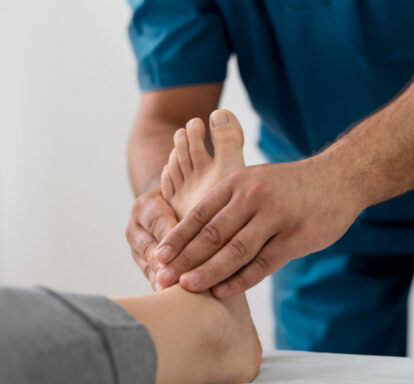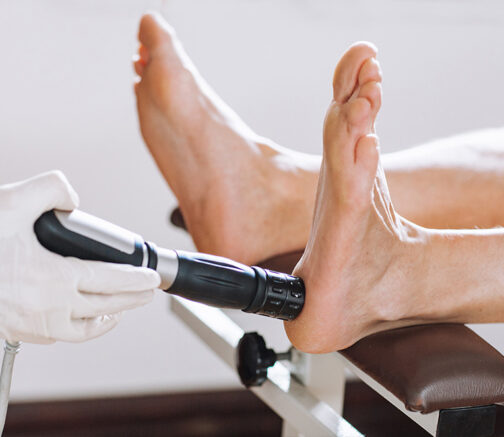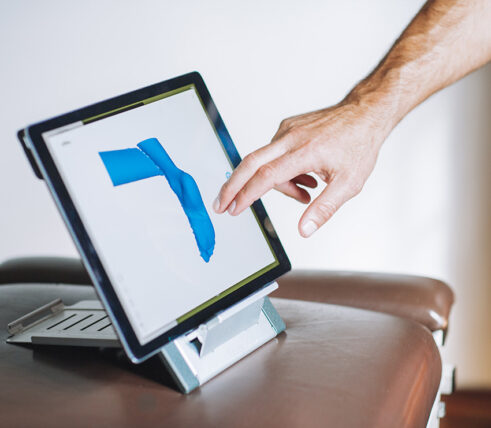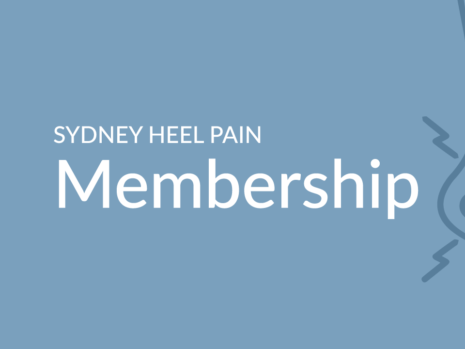Podiatrist Crows Nest
Clinically Guided Treatment for Foot and Heel Pain
Accurate, data-driven podiatry in Crows Nest plays a critical role in resolving persistent heel and foot pain. At Sydney Heel Pain Clinic, we provide biomechanical assessment and treatment at our Crows Nest location using diagnostic tools to pinpoint mechanical dysfunction and guide targeted intervention.
We do not offer nail care or skin treatments. This clinic exclusively manages patients with conditions such as plantar fasciitis, Achilles tendon issues, nerve entrapment, foot instability, and load-related joint pain.

Conditions Commonly Managed
- Plantar fasciitis and prolonged heel pain
- Achilles tendinopathy and Bursitis
- Metatarsalgia and discomfort beneath the ball of the foot
- Morton’s neuroma and other nerve-related symptoms
- Midfoot instability and mechanical collapse
- Postural strain in children and adolescents
- Flat feet and structural fatigue
- Shin pain and medial tibial overload
- Knee or hip discomfort originating from foot mechanics

Technology and Treatment Methods
Our podiatrist in Crows Nest uses digital technology and biomechanical data to identify and resolve the true source of dysfunction.
Recommended for long-standing plantar fascia and tendon complaints, this non-invasive therapy promotes vascular repair and tissue regeneration. Treatment is applied based on clinical need, not routine.
Each patient undergoes digital motion analysis to assess foot mechanics and pressure distribution in real time. This enables accurate diagnosis and removes guesswork from treatment decisions.
When required, orthotic devices are designed from 3D scans of the patient’s foot and customised to correct specific mechanical loading faults — not fitted from pre-made templates.
Footwear recommendations are made based on structural needs and movement findings — not general comfort or brand assumptions. Many cases improve with better load-matched footwear alone.
About Dr Karl Lockett
Dr Karl has over 20 years of experience in clinical podiatry with a specialised focus on mechanical heel and arch pain. He graduated with honours from the University of Salford in Manchester in 1998 and has dedicated his career to foot function and gait correction.
He has previously lectured in biomechanics and mechanical dysfunction at the University of Western Sydney and has been the consulting podiatrist to the Sydney Opera House since 2020. Patients often attend after standard care has failed to produce results.
Our Diagnostic Approach at Crows Nest
This clinic does not rely on generic pre-set protocols or symptomatic treatment. Every care plan begins with biomechanical analysis and functional assessment, ensuring the true mechanical barrier to healing is identified before treatment begins.
The diagnostic process focuses on movement patterns, compensatory stress, and long-term loading — especially in patients who have experienced poor results elsewhere.
Patients Commonly Seen at Our Crows Nest Podiatry Clinic
- Individuals in occupations involving long hours on their feet
- Active patients managing sport-related overuse injuries
- Older adults with tendon degeneration or instability
- Adolescents with load-induced growth or posture issues
- People who have already received podiatry without long-term improvement
Initial Appointment Process
- Case review and history of previous treatment attempts
- Digital load and movement assessment
- 3D structural scanning
- Functional testing and foot posture analysis
- Diagnosis explained with objective findings
- Recommendations for treatment or next steps
Clinic Location and Access
Our podiatry clinic in Crows Nest is easily accessed via public transport and is located near key retail and medical hubs. We welcome local patients as well as those referred from other parts of Sydney or regional NSW.

Why Early Diagnosis Matters
Delays in accurate diagnosis often lead to compensatory strain and poor healing outcomes. The sooner the mechanical root cause is identified, the better the chance of full resolution — without the cycle of recurring pain.
How Our Podiatry Clinic in Crows Nest Is Different
We do not offer general care services such as skin and nail trimming.
The podiatry Crows Nest service is centred around structural correction and gait restoration — using digital analysis and force measurement to direct care. Treatment plans are not based on symptoms alone but grounded in objective data.
Patients typically present when:
- Conventional podiatry has not resolved the issue
- Pain keeps returning after short-term relief
- A precise, data-supported diagnosis is needed to progress
The goal is not symptom management — it’s mechanical resolution.
Frequently Asked Questions
Do I need a referral to see a podiatrist in Crows Nest?
No. Appointments can be booked directly. Medicare EPC plans, DVA, and WorkCover referrals are accepted where appropriate.
What conditions are treated at your Crows Nest podiatry clinic?
We treat musculoskeletal conditions affecting the feet, including heel pain, plantar fasciitis, Achilles issues, nerve entrapment, forefoot loading problems, and foot-driven knee pain.
Are custom orthotics available at your Crows Nest location?
Yes. When clinically appropriate, orthotics are prescribed based on 3D scans and biomechanical data — not fitted from prefabricated models.
Is shockwave therapy provided at the Crows Nest clinic?
Yes. This therapy is available for chronic plantar fascia and tendon conditions, and is used only when evidence and clinical presentation support it.
What if I’ve already seen a podiatrist in Crows Nest with no improvement?
Our clinic routinely treats patients who have not progressed through standard care. We begin with a clean diagnostic slate, using load analysis and movement data to uncover what may have been missed.
How long will my first consultation take?
Most initial consultations are between 30 and 50 minutes, including scanning, assessment, and treatment planning.


